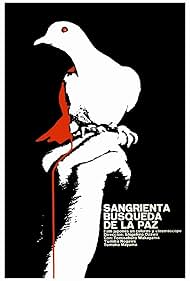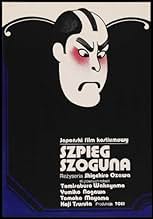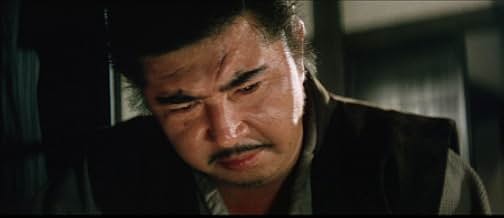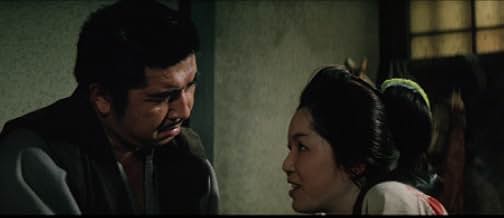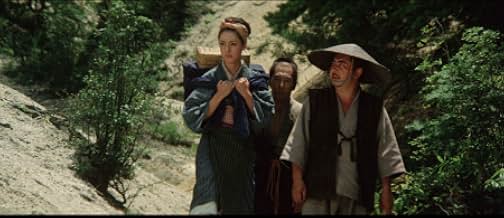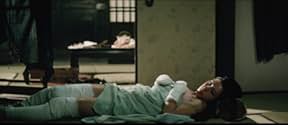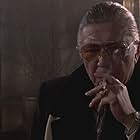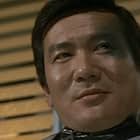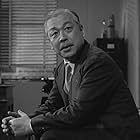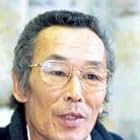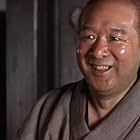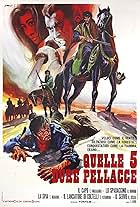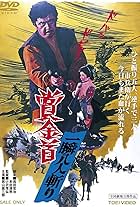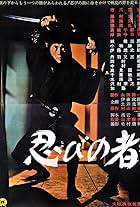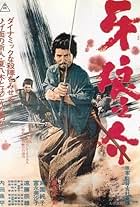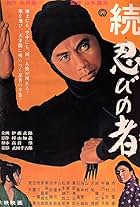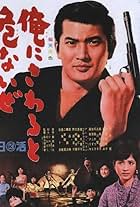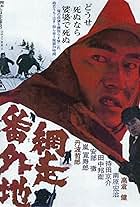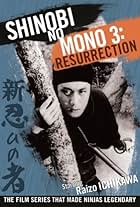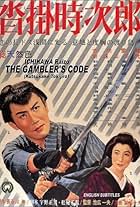A shogunate secret agent is sent to investigate a secret deal with a Dutch warship involving repeating rifles to be used in an uprising against the Shogun, but finds there's more going on th... Read allA shogunate secret agent is sent to investigate a secret deal with a Dutch warship involving repeating rifles to be used in an uprising against the Shogun, but finds there's more going on than previously suspected.A shogunate secret agent is sent to investigate a secret deal with a Dutch warship involving repeating rifles to be used in an uprising against the Shogun, but finds there's more going on than previously suspected.
Storyline
Did you know
- ConnectionsFollowed by The Fort of Death (1969)
Featured review
The great Tomisaburo Wakayama is one of my favorite actors ever for his role of Ogami Itto in the brilliant "Kozure Ôkami" (aka. "Lone Wolf And Cub") films, in which he starred between 1972 and 1974, and which rank among my favorite films of all-time. Director Shigehiro Ozawa is mainly known for his two great "Sasujin Ken" (aka. "Street Fighter") films from 1972 and 1974 starring Sonny Chiba. Therefore the pairing of Wakayama as leading man and Ozawa as director is a promising one for me, and for every other fan of Japanese Exploitation/Chambara cinema. And whilst "Shokin Kasegi" aka "Killer's Mission" of 1969 is by no means as brilliant as the "Lone Wolf And Cub" or the "Street Fighter" films it sure is an action-packed and vastly entertaining flick that every cult-cinema lover should enjoy. A great, sometimes slapstick-ish, sometimes sarcastic sense of humor, nice settings and fair amount of stylish bloodshed make this film highly enjoyable, and the great Tomisaburo Wakayama is the best leading man imaginable. Wakayama plays Shikiro Ichibei, an expert swordsman who likes to use ingenious secret weapons and gimmicks on his missions. Ichibei is assigned by Shogun Tokugawa to prevent the sale of a Dutch ships-load of rifles to the hostile Shogun Satsuma. On his mission he meets a (comically cowardly) Ronin who becomes his assistant, as well as a female spy (Yumiko Nogawa) and a female warrior (the ravishing Tomoko Mayama)...
The film is stylishly shot in beautiful landscapes around Kagoshima (in southern Japan), with some nice pictures of the Sakurajima volcano near Kagoshima. The choreography and swordplay are very nicely done, with several sequences of stylish, blood-soaked carnage. Tomisaburo Wakayama fits greatly in the role for which he wears a mustache, which looks cool (even though not nearly as cool as the Samurai-look in the "Lone Wolf and Cub" films). It is Wakayama who really makes this film such great fun, the guy simply was an icon whose cult-status is more than deserved. Yumiko Nogawa ("Zatoichi and the Fugitives") and Tomoko Mayama make a very nice female cast. I was especially delighted to see the stunningly beautiful Tomoko Mayama, whom Japanese cinema fans should know for her roles in two masterpieces: In 1972, she played a prostitute with a heart of gold in the first of the "Lone Wolf And Cub" films, "Kozure Ôkami: Kowokashi udekashi tsukamatsuru" ("Lone Wolf And Cub: Sword of Vengeance") aside Tomisaburo Wakayama. In 1973 she played a jealous girlfriend in the third (and greatest) of the brilliant "Joshuu Sasori"/"Female Prisoner Scorpion"-flicks starring Meiko Kaji, "Joshuu Sasori: Kemono-Beya" ("Female Prisoner Scorpion: Beast Stable"). After repeatedly seeing her in these two personal favorites of mine, it was great to see Mayama, a stunning beauty and great actress, in another earlier role. The cast furthermore includes the prolific Japanese character actor Chiezo Kataoka. The storyline is not too intriguing, but entertaining enough, and the great sense of humor, paired with violent sword-fights and the great Tomisaburo Wakayama provides great entertainment. Highly recommended to my fellow fans of Tomisaburo Wakayama and Chambara-buffs out there. My rating: 7.5/10
The film is stylishly shot in beautiful landscapes around Kagoshima (in southern Japan), with some nice pictures of the Sakurajima volcano near Kagoshima. The choreography and swordplay are very nicely done, with several sequences of stylish, blood-soaked carnage. Tomisaburo Wakayama fits greatly in the role for which he wears a mustache, which looks cool (even though not nearly as cool as the Samurai-look in the "Lone Wolf and Cub" films). It is Wakayama who really makes this film such great fun, the guy simply was an icon whose cult-status is more than deserved. Yumiko Nogawa ("Zatoichi and the Fugitives") and Tomoko Mayama make a very nice female cast. I was especially delighted to see the stunningly beautiful Tomoko Mayama, whom Japanese cinema fans should know for her roles in two masterpieces: In 1972, she played a prostitute with a heart of gold in the first of the "Lone Wolf And Cub" films, "Kozure Ôkami: Kowokashi udekashi tsukamatsuru" ("Lone Wolf And Cub: Sword of Vengeance") aside Tomisaburo Wakayama. In 1973 she played a jealous girlfriend in the third (and greatest) of the brilliant "Joshuu Sasori"/"Female Prisoner Scorpion"-flicks starring Meiko Kaji, "Joshuu Sasori: Kemono-Beya" ("Female Prisoner Scorpion: Beast Stable"). After repeatedly seeing her in these two personal favorites of mine, it was great to see Mayama, a stunning beauty and great actress, in another earlier role. The cast furthermore includes the prolific Japanese character actor Chiezo Kataoka. The storyline is not too intriguing, but entertaining enough, and the great sense of humor, paired with violent sword-fights and the great Tomisaburo Wakayama provides great entertainment. Highly recommended to my fellow fans of Tomisaburo Wakayama and Chambara-buffs out there. My rating: 7.5/10
- Witchfinder-General-666
- Aug 6, 2008
- Permalink
Details
- Release date
- Country of origin
- Language
- Also known as
- Ling Fung - Das glorreiche Schwert
- Production company
- See more company credits at IMDbPro
- Runtime1 hour 30 minutes
- Sound mix
- Aspect ratio
- 2.35 : 1
Contribute to this page
Suggest an edit or add missing content

